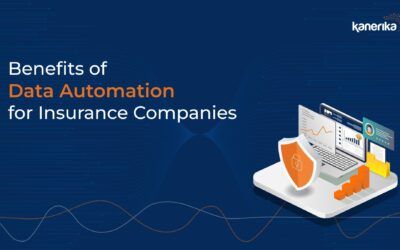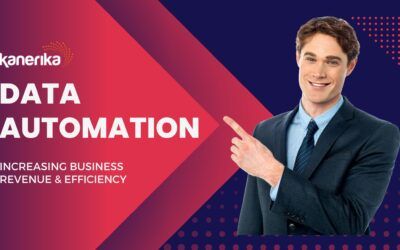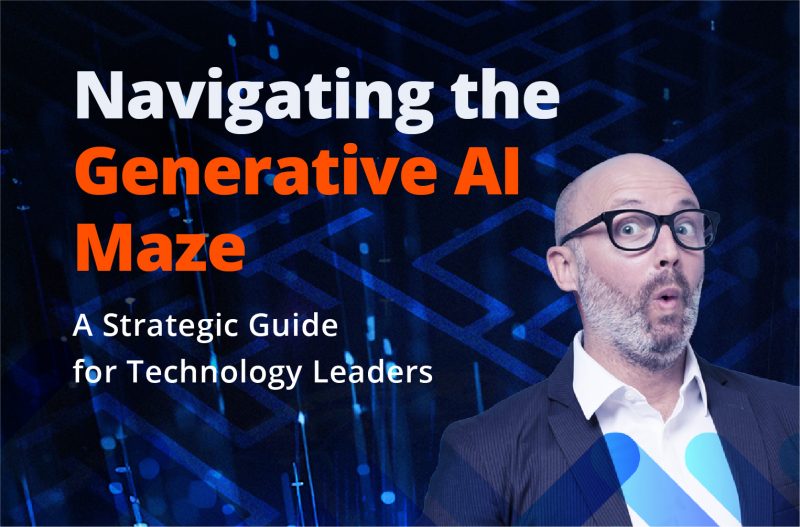According to a report by the Commonwealth Fund, the US spent 17.8 percent of its gross domestic product (GDP) on health care in 2021.
That is almost twice as much as the average OECD country (9.4 percent). Yet according to the World Health Organization, the US ranks 37th out of 191 countries evaluated regarding healthcare. Clearly, the US Healthcare Industry is failing to optimize its operations.
Bringing in a greater degree of healthcare data automation to simplify processes is of utmost necessity. This article will explore how healthcare can implement data automation and benefit from the latest AI tools.
What is Healthcare Data Automation?

The lengthy definition first.
Data automation in healthcare is the process of using automated tools or techniques to record, communicate, process, transform, load, or present data and information.
The TLDR version is next.
Data automation is the use of software to process data so that it is readily available for the end user.
Data automation can help healthcare organizations to:
- reduce costs
- improve efficiency
- enhance quality
- comply with regulations
- automate tasks
Principal Benefits of Healthcare Data Automation

- Reduced human intervention in patient onboarding, billing, claims processing, reporting, and prescription management.
- Data automation enables faster data exchange and analysis, leading to better decision-making and patient outcomes.
- Data-based diagnostic support can improve the accuracy, speed, and consistency of diagnosis and reduce costs and errors.
Steps to Implementing Healthcare Data Automation
These are some common steps in data automation implementation for healthcare entities.
- Identification of data: The first step involves choosing the data sources and formats you want to automate.
- Define objectives: You need to define the business objectives and requirements for the data automation project.
- Determination of data access: Deciding how to access and fetch the data from the source systems. You might work with open-source, third-party-generated, or your own historical data.
- Selection of tools and platforms: Choosing the appropriate tools and considering factors such as functionality, scalability, usability, cost, and compatibility.
- Defining transformations and operations: Specifying the logic and rules you want to apply to the data.
- Developing and testing ETL process: Implementing and testing the extract, transform, and load (ETL) process that automates the data tasks.
- Scheduling the automated work consists of setting up the frequency and timing of the automated work.
- Evaluate the results: The last step involves assessing the results and outcomes of the data automation project. You should also measure and report the benefits and impacts of data automation for your healthcare entity.
The Benefits and Features of FLIP, a Data Automation Tool for Healthcare
What is FLIP?
FLIP is a cloud-based data automation platform designed by Kanerika for the healthcare industry. It helps healthcare entities to organize, process, and analyze large amounts of complex data in real-time.
You can generate a bespoke report in seconds instead of waiting a week for your data analysts to deliver.
The main purpose of FLIP is to help clients make informed business decisions based on accurate and up-to-date information.
What does FLIP offer?

- At its core, FLIP provides an end-to-end data automation solution that helps healthcare operators to ingest data from multiple sources and formats.
- Popular input sources can consist of spreadsheets, PDFs, and APIs. FLIP then transforms it into a standardized format that can be easily analyzed. Our platform also offers powerful data modeling and analytics tools that allow you to visualize and explore data intricately.
- One of the key benefits of the FLIP platform is its ability to automate much of the data integration and analytics process. This can save hospitals valuable resources while also improving the accuracy and consistency of the reports.
- The platform uses machine learning and other advanced technologies to identify and extract key data elements. It can access both unstructured and semi-structured sources, and map them to a standardized data model.
- Once the data has been transformed and integrated, the FLIP data automation platform provides a range of powerful analytics and reporting tools that give you deeper insights into hospital operations.
- The platform offers a range of pre-built dashboards and reports that can be customized to meet your specific needs. These allow healthcare providers to analyze their data automation performance.
How can FLIP be customized?
- In addition to its core data integration and analytics capabilities, the FLIP platform offers various additional features and services that allow healthcare institutions to benefit from their data automation pipelines.
- You have easy access to powerful data visualization and exploration tools that allow you to drill down into the data and identify trends and patterns that might otherwise go unnoticed.
- You could add modules to monitor such as data quality. Otherwise, it can work as a data governance tool and ensure data privacy and security.
- We can customize it for data enrichment services, with advanced analytics and modeling tools.
- The platform is highly scalable. FLIP can be customized to meet the needs of healthcare entities of all sizes. Whether you run a small county hospital or a healthcare behemoth, it can assist and monitor the data flow.
Get FLIP Today!
FLIP’s zero-code AI-powered platform offers healthcare organizations a powerful and flexible solution for managing and analyzing complex data sets.
If you are searching for a cost-effective data automation solution for healthcare organizations, look no further. FLIP is the perfect tool to assist business users in making better-informed decisions and improving overall performance.
You can sign up for your free account by booking a meeting here!
FAQ
Can Data Automation in Healthcare Lead to Cost Savings?
How Do You Choose the Right Tools and Platforms for Data Automation?
What Is the Role of Data Transformations and Operations in Data Automation?
What Are the Principal Benefits of Data Automation in Healthcare?
Why Is Data Automation Important in Healthcare?
What Features Does FLIP Offer for Healthcare Data Automation?
How Does Data Automation Improve Patient Onboarding and Billing Processes?
How Does Data Automation Impact Patient Care?
What Role Does AI Play in Healthcare Data Automation?
Thank you for reading our new series of posts on FLIP. If you want to know more about Kanerika and FLIP, please write to us at contact@kanerika.com.
Follow us on LinkedIn and Twitter for insightful industry news, business updates and all the latest data trends online.









